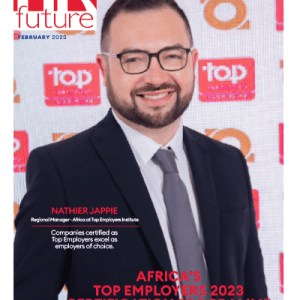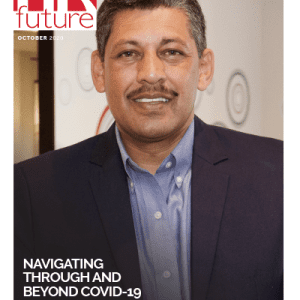Imagine a workplace where employees aren’t just showing up for a paycheck but are genuinely excited to contribute, collaborate, and innovate. This isn’t some romantic fantasy—it’s the power of true employee engagement. But let’s be real; building a truly engaged team takes more than perks. It demands a shift in focus from superficial perks to cultivating a culture of purpose and belonging.
In today’s rapidly evolving work landscape, where employees crave meaning and connection more than ever, HR professionals must rethink their approach to engagement. This means understanding the limitations of relying solely on extrinsic motivators and embracing strategies that tap into intrinsic drivers.
It’s about creating an environment where employees feel valued, supported, and inspired to contribute their best work. And if you’re searching for ways to enhance your productivity or streamline your workload, exploring PaperWriter reviews can offer insights into reliable resources for writing assistance. Understanding the tools available to you is a crucial step in achieving professional and academic success. Now, let’s jump in!
Beyond Perks: Unpacking the Engagement Equation
While free lunches, gym memberships, and unlimited vacation time might seem like the golden ticket to a happy workforce, they often fall short of creating lasting engagement. This is the Perk Paradox: these extrinsic motivators can create a sense of entitlement, mask deeper issues within the organization, and become unsustainable in the long run.
Employees might enjoy the benefits but don’t necessarily feel a deeper connection to their work or the company’s mission. To understand the true drivers of engagement, we need to delve into the core components of the Engagement Equation:
The power of purpose
Purpose, in the workplace context, goes beyond simply performing tasks. It’s about understanding how one’s contributions make a difference in the bigger picture. When employees feel connected to a larger mission, they are more likely to:
- Experience greater motivation: Knowing that their work has meaning provides a sense of intrinsic motivation that transcends external rewards.
- Drive better performance: Purpose-driven employees are likelier to go the extra mile, be proactive, and take ownership of their work.
- Stay with the company longer: A strong sense of purpose fosters loyalty and reduces turnover.
The importance of connection
We’re all hardwired to connect with others, right? It’s like we need that sense of belonging to thrive. At work, this means feeling like you matter, that your colleagues respect you, and that you’re part of a team that has your back. When those relationships are strong, good things happen, like…
- Increased collaboration and teamwork: Team members who feel they belong are more likely to work together seamlessly and support each other.
- Improved communication and feedback: Trust and connection fosters open communication and constructive feedback.
- Enhanced well-being and reduced stress: Feeling supported and connected can help mitigate workplace stress and improve overall well-being.
Actionable Strategies for Cultivating Purpose and Connection
Moving beyond perks requires a proactive approach to fostering purpose and connection within the organization. Here are some actionable strategies HR professionals can implement:
Leading with purpose
First, ensure your company’s mission, vision, and values aren’t just some fancy words gathering dust on your website. Bring them to life! Weave them into your company culture, day-to-day work, and every decision you make. When your employees see that these values are implemented, they’ll be more likely to buy into them.
Show your employees how their roles contribute to the bigger picture. Think of regular communication, project updates, or even tweaking job descriptions to highlight the impact of their work.
Fostering connection
Think about it: how can people feel connected if they never actually connect? So, create opportunities for your team to interact, whether it’s face-to-face or in the virtual world. Team-building activities, mentorship programs, social events (virtual happy hour, anyone?), or even online communities where they can chat and share ideas. It’s all about building those relationships.
And while we’re at it, let’s ditch the corporate jargon and encourage real talk. Oh, and don’t forget the power of a simple “thank you”! A good recognition system can work wonders.
Finally, let’s empower our leaders to be, well, leaders! When leaders prioritize connection and support, it creates a ripple effect throughout the organization.
Measuring the Impact: Engagement Metrics That Matter
To truly gauge the effectiveness of your engagement initiatives, you need to look beyond traditional metrics like employee satisfaction surveys. While surveys provide valuable insights, they only capture a snapshot in time and may not fully reflect the nuances of employee experience.
A more holistic approach to measuring engagement involves combining quantitative and qualitative data. This might include:
- Employee feedback: Regularly solicit feedback through pulse surveys, one-on-one meetings, and suggestion boxes.
- Performance reviews: Assess not just the quantity of work but also the quality, initiative, and enthusiasm employees demonstrate.
- Retention rates: Track employee turnover and analyze the reasons behind departures.
- Absenteeism: Monitor absenteeism rates as a potential indicator of disengagement or burnout.
- Qualitative assessments: Observe team dynamics, collaboration levels, and the overall atmosphere in the workplace. Conduct focus groups or interviews to gain deeper insights into employee experiences.
Conclusion: The Future of Employee Engagement
Emerging trends like the rise of technology, the increasing importance of well-being, and the growing focus on diversity and inclusion will further shape the engagement landscape. HR professionals who embrace these trends and proactively cultivate a culture of purpose and connection will be best positioned to attract, retain, and engage top talent in future years.
In this evolving environment, questions about workplace ethics and resource utilization are also gaining prominence. For example, are essay writing services legit? This topic not only sparks debate about academic integrity but also highlights the growing reliance on external tools to manage workload, a trend that mirrors the broader shifts in workplace dynamics. The future of work belongs to those who recognize that true engagement is not about fleeting perks but about fostering a deep and meaningful connection between employees and their work.
Guest writer.



























